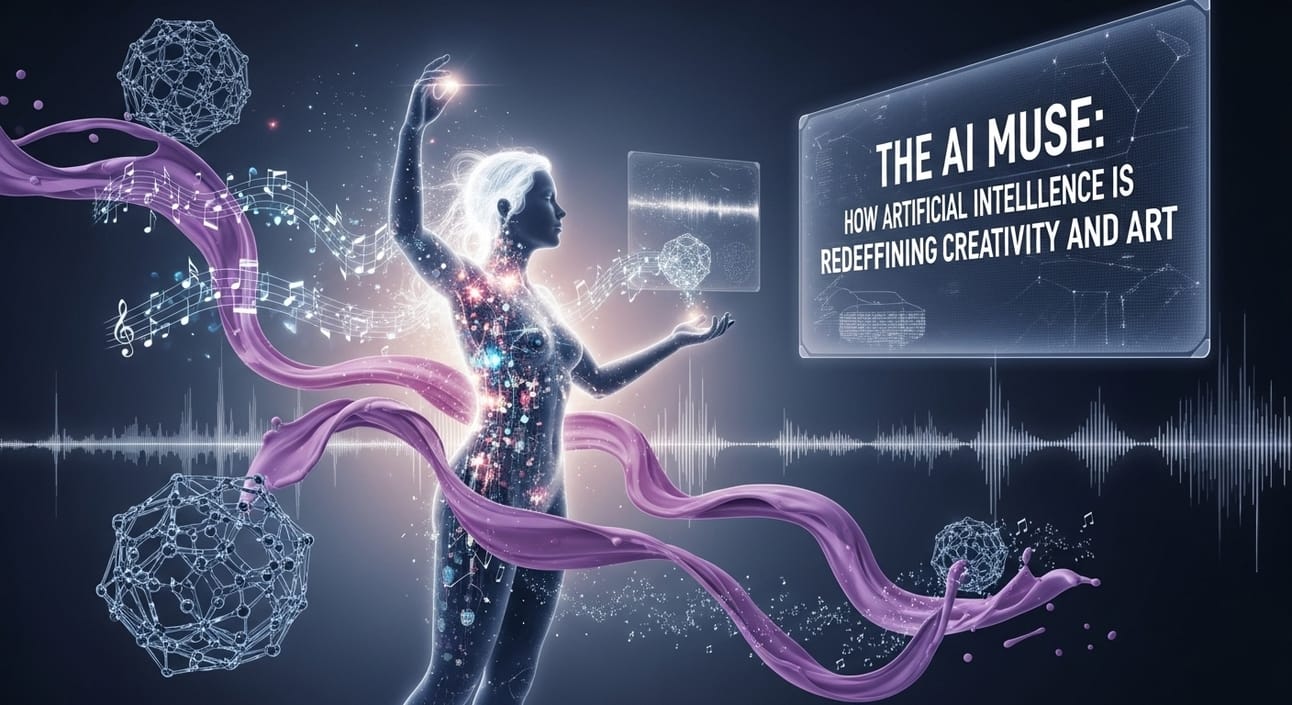- Digital Brain
- Posts
- The AI Muse: How Artificial Intelligence is Redefining Creativity and Art
The AI Muse: How Artificial Intelligence is Redefining Creativity and Art

Hello, Digital Brain reader!
We've explored AI's profound impact on decision-making, work, and even our personal lives. Today, let's delve into a realm once considered exclusively human: creativity. From generating breathtaking images to composing original music and crafting compelling narratives, Artificial Intelligence is rapidly becoming a powerful "muse," challenging our traditional notions of art and the creative process. How is your "Digital Brain" adapting to a world where algorithms dream?
From Simple Algorithms to Generative Masterpieces
For decades, AI's role in creativity was limited to simple pattern recognition or rule-based generation. Think of early programs that could compose basic melodies or generate abstract patterns. However, with the advent of deep learning and generative adversarial networks (GANs), and more recently, large language models (LLMs) and diffusion models, AI's creative capabilities have exploded.
These advanced models can learn from vast datasets of existing art, music, and text, then generate entirely new content that often rivals human-made creations in complexity, style, and even emotional resonance.
AI's Canvas: Exploring Creative Fields
Visual Arts: Tools like Midjourney, DALL-E, and Stable Diffusion have democratized image creation. Artists and enthusiasts can now generate stunning visuals from simple text prompts, explore different styles, and rapidly iterate on ideas. AI can also assist in tasks like style transfer (applying the style of one image to another), upscaling, and even generating entire virtual worlds. The human role often shifts from direct brushstrokes to "prompt engineering" – the art of guiding the AI with precise textual descriptions.
Music Composition: AI is composing original pieces in various genres, generating background scores for films, and even assisting musicians in overcoming creative blocks. Platforms like Amper Music or AIVA can create full orchestral pieces or pop songs based on user preferences, tempo, and mood. While human composers still lead, AI offers a powerful tool for exploration and rapid prototyping.
Writing and Storytelling: Large Language Models (LLMs) are not just for answering questions; they can write poetry, generate scripts, draft novels, and create marketing copy. They can assist screenwriters in brainstorming plotlines, help authors develop characters, or even write entire articles. The human writer becomes an editor, a curator, and a director of the AI's linguistic prowess.
Film and Video Production: AI is being used for everything from generating realistic special effects and deepfakes (raising significant ethical concerns) to automating video editing, color grading, and even creating entire animated shorts. It streamlines post-production and opens new avenues for visual storytelling.
The Great Debate: Is It "Art"? Is AI Truly Creative?
The rise of AI-generated content has sparked intense debate:
Authorship and Originality: If an AI creates a piece, who is the artist? The AI? The person who wrote the prompt? The developers of the AI?
True Creativity vs. Pattern Recognition: Does AI truly "understand" or "feel" what it creates, or is it merely a sophisticated pattern-matching engine recombining existing data? Many argue that true creativity involves intention, emotion, and a unique human perspective that AI currently lacks.
Copyright and Ownership: Who owns the copyright to AI-generated works? This is a complex legal area that is still being defined.
The Future: Collaboration, Not Replacement
Most experts agree that AI is unlikely to fully replace human creativity. Instead, it will serve as a powerful collaborator, augmenting human capabilities and democratizing access to creative tools.
New Artistic Mediums: AI opens up entirely new forms of artistic expression and interaction.
Efficiency and Exploration: Artists can use AI to accelerate tedious tasks, explore countless variations, and push the boundaries of their imagination.
Focus on Concept and Vision: With AI handling much of the execution, human creators can focus more on the conceptualization, emotional depth, and unique vision behind their work.
The "Digital Brain" is not just about logic and data; it's increasingly about imagination and expression. As AI continues to evolve, the definition of creativity itself may expand, inviting us to explore new frontiers where human ingenuity and algorithmic power intertwine.
Stay inspired, stay creative, and see you in the next edition!
Sincerely,
The Digital Brain Team